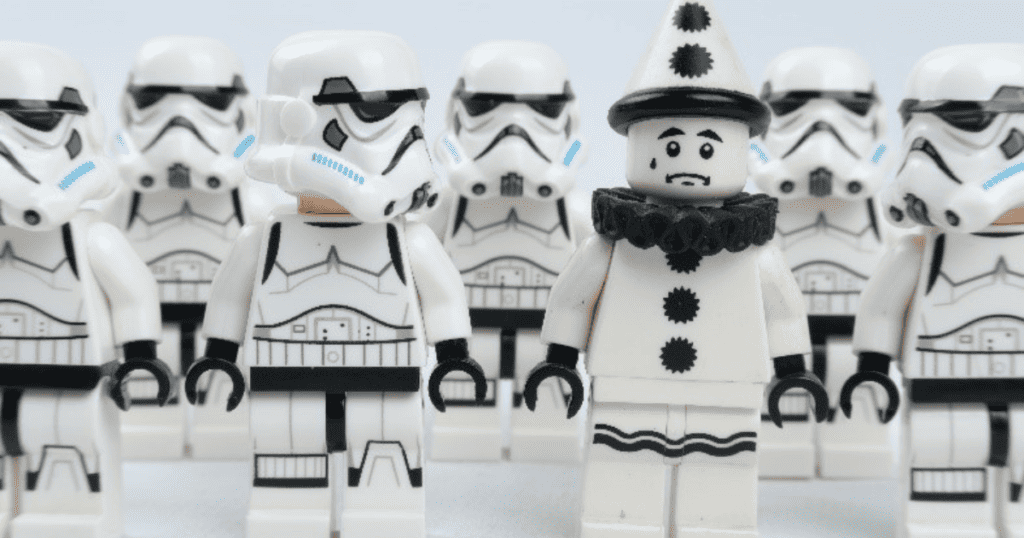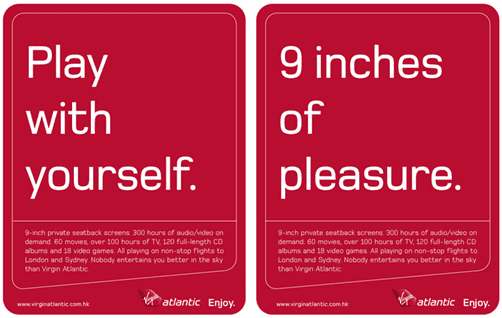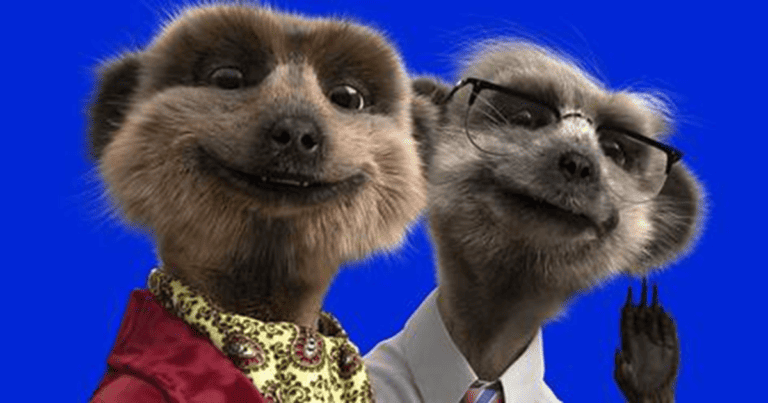George Lois, legendary creative director and advertising guru from the Madison Avenue generation, once said:
“Because advertising and marketing is an art, the solution to each new problem or challenge should begin with a blank canvas and an open mind, not with the nervous borrowings of other people’s mediocrities. That’s precisely what ‘trends’ are – a search for something ‘safe’ – and why a reliance on them leads to oblivion.”
He said that at a time when, compared with today, our exposure to advertising was actually quite low. We now live in an era where individuals are exposed to upwards of 5,000 branded messages every single day, the vast majority of which aren’t even noticed, let alone taken notice of.
The need to be different, to stand out from the crowd, has never been more important than it is today.
So why is it that so many brands seem to prefer uniformity?
Take the airline industry.
What brands really stand out? Virgin Atlantic, certainly.
When it launched back in 1984 (wow, where did that time go?) it dared to be different, bringing an alternative tone of voice and a fresh new vibe to the airline industry. It’s easier to do when you’re the new kid on the block, but prior to that, no brand seemed to be having any fun.
Virgin’s iconic red colour scheme, stylised ‘Flying Lady’ emblem, cheeky personality and disruptive advertising, brought a new perspective into an industry known for pretty rigid conventions.
Perhaps there are other forces at work in the airline industry: it would appear that regulatory frameworks lead to many airlines conforming to similar service offerings, brand messaging, and even visual identities.
And they’re not alone.
Banking, financial services and the insurance industry all (understandably) face regulatory constraints that lead to conformity in so many ways. Perhaps that’s the problem – the need to comply with regulation leads to a conservative attitude, a general trend towards risk-mitigation over risk-taking?
How many CEOs in these companies are genuine innovators?
And it’s not just in heavily regulated industries. Conformity is everywhere. From a marketing perspective, that’s pretty frustrating – but if we want to change things, we need to understand why brands often conform to convention:
- Risk aversity
As we’ve seen above, many businesses prioritise mitigation of risk and ensuring stability. Brands worry that deviating from established norms could alienate their existing customer base, leading them to play safe. “We’re making plenty of money, don’t rock the boat.” - Market pressure
The desire to appeal to a broad customer base can also lead brands to play it safe. Brands that stand out usually have strong opinions, and opinions can be divisive. Putting your head above the parapet takes courage; it’s easier to follow the trends set by successful competitors. Creativity? That’s for the brave. - Lack of innovation
This is a cultural thing that pervades from the CEO down – some brands lack a culture of innovation or fail to invest in creative thinking. Inevitably, this results in a reliance on tried-and-tested approaches and a resistance to exploring unconventional ideas. Without a commitment to fostering a culture of innovation, brands are more likely to blend in with their competitors rather than carving out a unique identity. - Limited resources
Budget constraints and limited resources can hinder a brand’s ability to pursue truly distinctive marketing strategies. Developing and implementing great creative campaigns often requires additional investment, research, and experimentation. And it’s not something you can dip in and out of – building a ‘different’ brand perception takes time and commitment – you’ve got to be prepared to go the distance. When resources are scarce, brands usually opt for a more obvious solution which again, will (inevitably) result in uniformity. - Lack of clarity
Some brands struggle to define their brand positioning, ‘unique’ value proposition and brand personality. When there’s no clarity about what sets them apart, brands often inadvertently adopt a generic approach. This can be as result of limited resources – a lack of investment in customer and competitor research, brand positioning and creative resource will always be a hindrance to delivering a powerful brand.
OK, so we get why many brands choose, or are forced, to play safe. But in an era where conformity prevails, the words of George Lois ring true more than ever. It seems like there’s a massive opportunity being missed by an unbelievable number of brands.
Surely, a brand that chooses to go against convention can really stand out?
We’re living in tricky economic times. Inflation remains stubbornly high; interest rates are rising, and recession remains a very real possibility. Many are even saying recession would be a good thing.
There seems little doubt that there’s a rocky road ahead on the sales front.
In this climate, blending into the background is a surefire way to be overlooked. If you want to thrive, you need to distinguish your brand from the masses.
Embrace creativity, embrace different thinking.
What happens when you do?
You get talked about, that’s what. You get noticed. You get a chance to influence customer thought processes and change their behaviours.
After all, that’s what marketing is all about isn’t it?
Here’s a great example:
How a small mammal disrupted the market
When Compare the Market launched in 2006, they were already late to the insurance aggregator party. In 2009, finding themselves in fierce competition with MoneySuperMarket, Go Compare and Confused.com, they launched an iconic advertising campaign.
‘Compare the Meerkat’ turned out to be a creative masterstroke.
Of course, it wasn’t without risk – messing about with your own brand name is generally considered a no-no. And to have slightly unhinged, somewhat anarchic characters associated (even loosely) with the financial services industry, even in an aggregator capacity, was certainly not what you’d expect.
This was definitely a case of zagging, when others were zigging.
It paid off because it stood out.
Aleksandr Orlov and Sergei became a cultural phenomenon, and ‘Simples’ became instant shorthand for the brand. It went viral.
800 million views on YouTube.
Website traffic increased by 400% during the peak of the campaign.
A 76% increase in revenue within two years of launching the campaign.
The brand remains largely as it did then – a testament to the impact of daring to be different and creating a brand identity that goes its own way.
When your brand ambassadors are small mammalian characters from the Kalahari Desert with Russian accents, you certainly can’t be accused of conforming to convention.
Take a good look at your brand
Now, take an honest look at your website or latest marketing campaign. Can your logo / brand name be swapped with a competitor’s without a noticeable difference?
If the answer is “yes,” then your message lacks the distinctiveness necessary to make an indelible impression in an incredibly noisy market. Effective marketing requires a brand identity that is unmistakably yours.
I mean, really? How distinctive is your brand?
It’s a simple, but sobering test.
Remember, uniformity breeds mediocrity.
So, you want to be different?
If you want to stand out, you’ll need to think differently:
- Embrace the power of risk-taking
If we accept that playing it safe seldom gets attention, then taking a risk must be the answer – but there’s no need to be irresponsible! We’ve seen how calculated risks can liberate brands from the confines of predictability and captivate audiences. Embrace the unknown and cross those conventional boundaries – the opportunity is huge. Don’t be afraid to be audacious. - Start with a blank canvas
Always try to approach the challenge from a fresh perspective. George Lois championed the idea that the finest solutions arise from unbridled creativity, untainted by the limitations of prior trends or borrowed ideas. By discarding preconceived notions, you can unleash ideas that really set you apart. - Rewrite the narrative
Conforming to societal norms and industry standards can often breed stagnation. Shattering the mold and rewriting the narrative yields powerful outcomes. Challenge established conventions and take a stance – disrupt the status quo and captivate your target audience. Don’t be afraid to express an opinion – write thought-provoking content, challenge prevailing industry practices and above all, be interesting. - Have courage
Instead of following the herd, be brave. Be different. By expressing genuine opinions and fostering meaningful conversations, you can attract like-minded individuals who appreciate the authenticity of your brand, ultimately transforming them into loyal customers. Remember, it’s better to be loved by a few than tolerated by many.
In competitive markets, being distinctive isn’t an option, it’s imperative. Brands that blend in, risk fading into insignificance, while those that dare to stand out and embrace their difference, can unlock their potential for success.
Take risks, defy convention.
Dare to be different.



